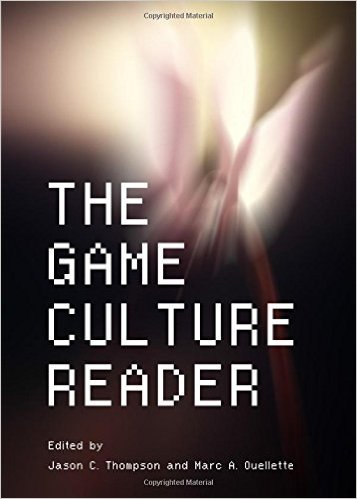There is a 2000-mile extension of political division between México and the United States (US) known to us who have lived in it simply as La Frontera,The Border. It is an area that the media has presented as a place of decadence filled with drug wars, prostitution, economical need, and immigrants trying to invade the US.
This video summarizes the creation of the games, the final product, and shows takes from the game sessions held in Lubbock and El Paso, Texas, and Ciudad Juárez, México. All to the sound of "Take Five" performed by Dave Brubeck's jazz group.
Game 1 :: Crossing the Bridge
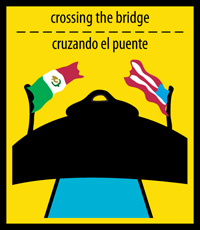 This is a modified version of a game that I designed back in 2001 after the 9/11 attacks to the World Trade Center. The new version of “Crossing the Bridge” illustrates the symbiotic relationship of the El Paso-Juarez border by resembling the cliché of the illegal exchange of goods between both cities.
This is a modified version of a game that I designed back in 2001 after the 9/11 attacks to the World Trade Center. The new version of “Crossing the Bridge” illustrates the symbiotic relationship of the El Paso-Juarez border by resembling the cliché of the illegal exchange of goods between both cities.
In the game, players smuggle illegal cargo into the United States like food, alcohol, illegal aliens and drugs that they hide in their vehicles. But it is not that easy, the Border Patrol Officers will be searching for illegal cargo before you enter the country. They could take your cargo, your passport or even your car as a penalty for being a smuggler.
But when succeeding, the players receive money for their cargo and they can use it to buy appliances for their houses (that need to be smuggled back to México to avoid paying taxes) or to buy more cars. The player who gets all the appliances necessary to have a first-class-home, wins.
Game 2 :: Observance
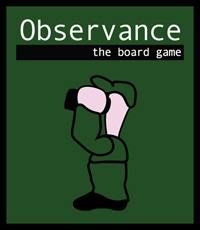 I came up with the idea of creating the game of Observance in response to the July 28, 2007 rejection of the U.S. Senate to revise the Immigration Reform Bill. I called the game observance because that is what people do when they are faced with the process of illegal migration: The immigrants observe the territory to see if they are being watched or followed; The border patrol observes the area in search of these immigrants and tries to stop them.
I came up with the idea of creating the game of Observance in response to the July 28, 2007 rejection of the U.S. Senate to revise the Immigration Reform Bill. I called the game observance because that is what people do when they are faced with the process of illegal migration: The immigrants observe the territory to see if they are being watched or followed; The border patrol observes the area in search of these immigrants and tries to stop them.
The game then presents the drama of illegal immigration in some isolated area of the border between México and the U.S. Observance takes after the mechanics of the game Battleship® in two aspects: First, this is a 2 player game, where each player takes the role of one particular regime: the Border Patrol agents (BP) or the Illegal Aliens (IA). Secondly, Observance uses 2 sets of coordinates, one for each player; the set runs from 1 to 9 horizontally and from A to G vertically.
If you found Observance interesting and want to give it a try, download the PDF documents by clicking on the the icons.
After playing, send me comments and/or images of your copy (send them to ogfranci@hotmail.com).
Rules to play Observance

Game Material to Print. Make sure to have glue or tape to put the pieces together, and scissors (be careful, or it might get messy). Print two copies of the coordinates page.

Each player has six game pieces, or characters. All characters have names and background stories that are included in the rules. The reason for this is to give a humanistic perspective to the abstracted product. A game piece is not just an object since it represents a person who has a reason for being there and acting in a particular way. For example, a character for the BP set is Mark, a 30 year-old African American man who wanted to enroll in the U.S. Air Force but was not accepted. He suspects racism and, instead of wasting more time, he decides to serve his country in the Border Patrol Agency since they promised him pilot training after serving for a few years. In contrast, in the IA set includes Paco, a 12-year-old kid from Veracruz who expects to find his parents in Nevada.
Right before finishing the design of the game, I decided to add two particular characters on the U.S. side: Mr. and Ms. Minuteman. In the times of the American Revolution, the Minuteman were a special militia force always prepared for any type of attack, and “their constant state of readiness at ‘a minute’s notice’ earned them the title, Minuteman” (The Minuteman Civil Defense Corps, 2004, para. 1). Today, the name has been taken by civilians who act like a militia in an effort to find a solution to the “uncontrollable” immigration crisis. In the Minuteman Civil Defense Corps web site, their mission statement reads:
It is the mission of the Minuteman Civil Defense Corps to see the borders and coastal boundaries of the United States secured against the unlawful and unauthorized entry of all individuals, contraband, and foreign military. We will employ all means of civil protest, demonstration, and political lobbying to accomplish this goal. (aboutus.php)
Under the words defense and freedom, many acts of racism and violence against immigrants by the minuteman have taken place throughout the border (El Diario, 2008). There have been direct associations between some chapters of the minuteman with extremist groups like the neo-Nazis and the KKK (El Diario, 2007). In 2005, Chris Simcox, the leader of the minuteman stated, and I paraphrase, that their only concern was to bring back the attention of the nation to a government that has failed in defending the border (El Diario, 2006). But since then, they have served as immigrant capturers and terrorists. Personally, I have seen pictures of minuteman groups preparing for their routine searches as if they where preparing for a picnic: the whole family joins in. They carry guns and other types of weapons as if they were out hunting. To this point, I have not read anything that I can use to indict members of the minuteman with murder in relation to their anti-immigration campaigns. Still, I believe that their presence in the evolution of the border is something worth telling, and it is important to make a distinction between the capture of immigrants by official forces and those made by civilian ones.
For any audience that knows the game of Battleship®, the first impression they get is that Observance is a rip-off or just a theme variation, but Observance does differ in many other ways: to begin, each player has a different goal to reach. The player acting as Border Patrol (BP) must capture all Illegal Aliens (IA). On the other hand, the IA player has to search and find a green card that the BP player has hidden in the stage of preparation for the game. In contrast to Battleship®, where the naval ships need to be set before the game begins, the characters in Observance do not begin on the board; instead, they step into it as the game progresses. The BP player also hides 2 churches, if found by the IA player, can be used as sanctuary for political asylum and the BP player cannot harm or capture those aliens while they remain in the church. The reason I included churches in the game is because on August 19, 2007, a woman by the name of Elvira Arellano was deported after living under sanctuary for 12 months in a church in Chicago (El Diario, 2007b). This attracted my attention for two reasons: (1) there are still places in the U.S. that protect the cause of any immigrant, and (2) that the U.S. government respected the church’s status as political asylum for so long. I had to add this in some way, and I think the abstraction of the church element in the game perfectly reflects this anecdote.
In 2005, the U.S. Congress gave unconditional power to the Department of Homeland Security to begin the construction of a wall along the México-U.S. border (El Diario, 2008b). This wall has become subject of uncountable critiques on many levels: social, cultural, political, and environmental. Still, the U.S. Congress is determined to continue with this project regardless of any opinions. Since this is an important phenomenon on the border, I implemented the wall element into the game. As the game of Observance evolves, the BP player will be blocking the border just where the Rio Grand starts by constructing a black wall. This wall will not entirely close the border, but can redirect the entrance of any alien to a very specific place where the BP could be patently waiting for their capture .
A complete game of Observance consists of two sets, where player 1 plays the part of the BP and player 2 plays as the IA, and then they switch positions. This detail in the mechanics of the game is important because it presents the opportunity of being “the other” to the players, and lets them think about the consequences of their actions in relation to their current or future position in the game. If we consider that a player’s motivation to play is to win, in Observance, it does not matter if you are protecting a country’s borders or violating them: the important thing is to reach your goal. In this case, it becomes an issue of necessity and not an issue of ethics, which is a point that I think important to consider when looking at the real-life actions of both the border defense and immigrants. A set is over when all aliens are no longer on the game board because some have been captured by the patrol and others have found their way to the green card. After the second set, the player who was able to lead more aliens to the green card, wins the game.
Game 3 :: H1B Visa
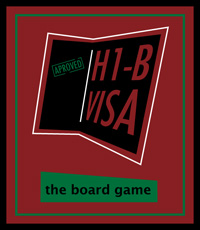 This game unites all four [4] players to beat the game’s mechanics in a race against time. This game called “H1-B Visa,” illustrates the procedures that an immigrant has to go through in order to reach a legal status in the United States.
This game unites all four [4] players to beat the game’s mechanics in a race against time. This game called “H1-B Visa,” illustrates the procedures that an immigrant has to go through in order to reach a legal status in the United States.
All players need to collaborate in order to beat the 30-minute clock. When time runs out, if players where not able to recover their personal documents, pay the appropriate fees, present their applications and/or have their passport ready, all of them will be deported.
While moving around the game board, searching for all the documentation, players need to be careful not to bump into Border Patrol Officers that will send them to the interrogation room for questioning until some other player presents the appropriate documentation. Players can use the subway to move faster, drink coffee to run like the wind, or take a cab to get as fast as they can to the U.S. Consulate and try to get their H1-B Visa.
If you found H1-B Visa interesting and want to give it a try, download the PDF documents by clicking on the the icons. Make sure that your computer has the Acrobat Reader®.
After playing, send comments and/or images of your copy to ogfranci@hotmail.com.
Contents: Board game separated in four pieces, 14 large red cards, 8 squared red cards, 8 squared yellow cards, 6 characters.
Rules to play H1-B Visa

Material to Print

Make sure to have glue or tape to put the pieces together, and scissors.
 LUDOZTLI
( lou • dos • tlee )
stands for “making games.”
The
attempt of ludoztli is to use board games as:
active art
:: social commentary
:: group interaction
:: a means of expression
:: social re-constructors.
LUDOZTLI
( lou • dos • tlee )
stands for “making games.”
The
attempt of ludoztli is to use board games as:
active art
:: social commentary
:: group interaction
:: a means of expression
:: social re-constructors.
 This is a modified version of a game that I designed back in 2001 after the 9/11 attacks to the World Trade Center. The new version of “Crossing the Bridge” illustrates the symbiotic relationship of the El Paso-Juarez border by resembling the cliché of the illegal exchange of goods between both cities.
This is a modified version of a game that I designed back in 2001 after the 9/11 attacks to the World Trade Center. The new version of “Crossing the Bridge” illustrates the symbiotic relationship of the El Paso-Juarez border by resembling the cliché of the illegal exchange of goods between both cities. 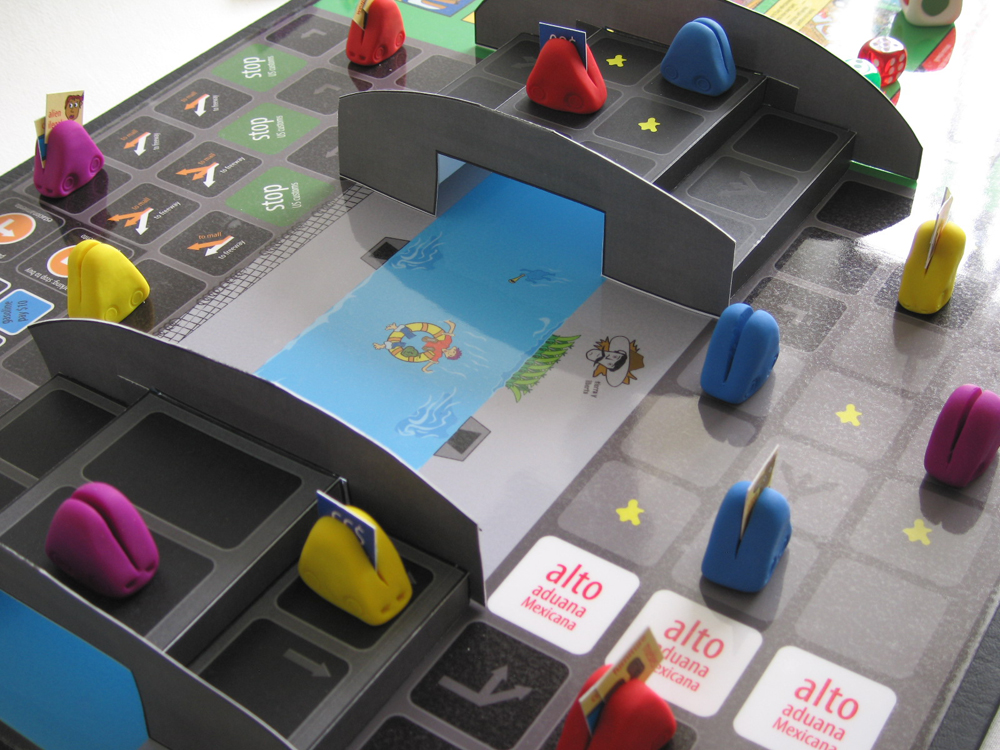
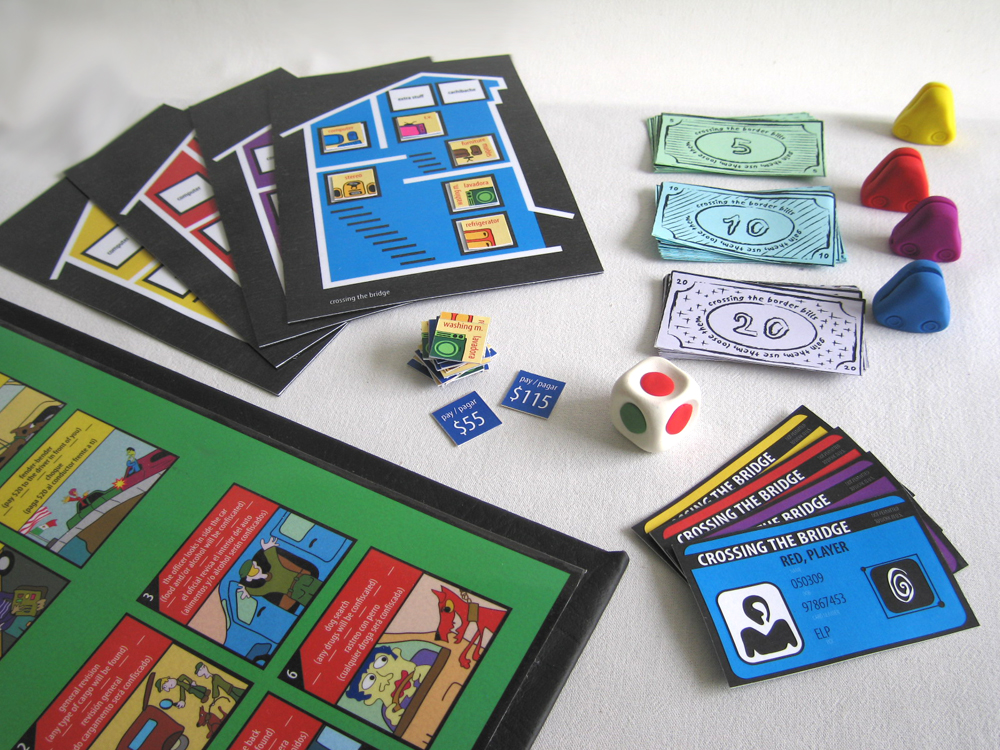
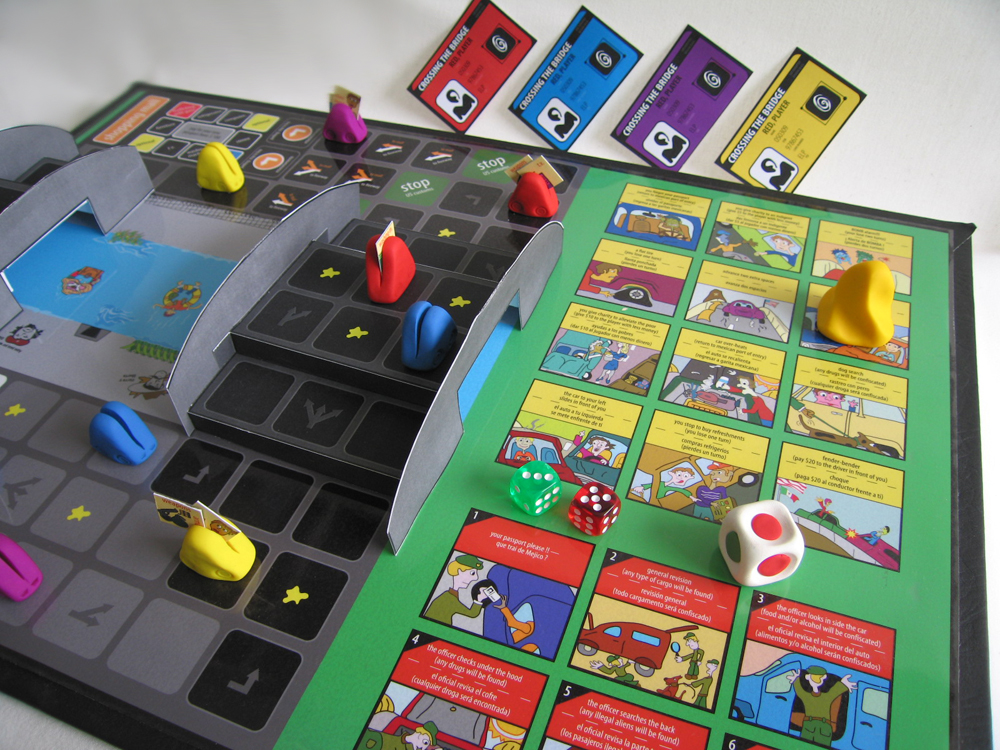
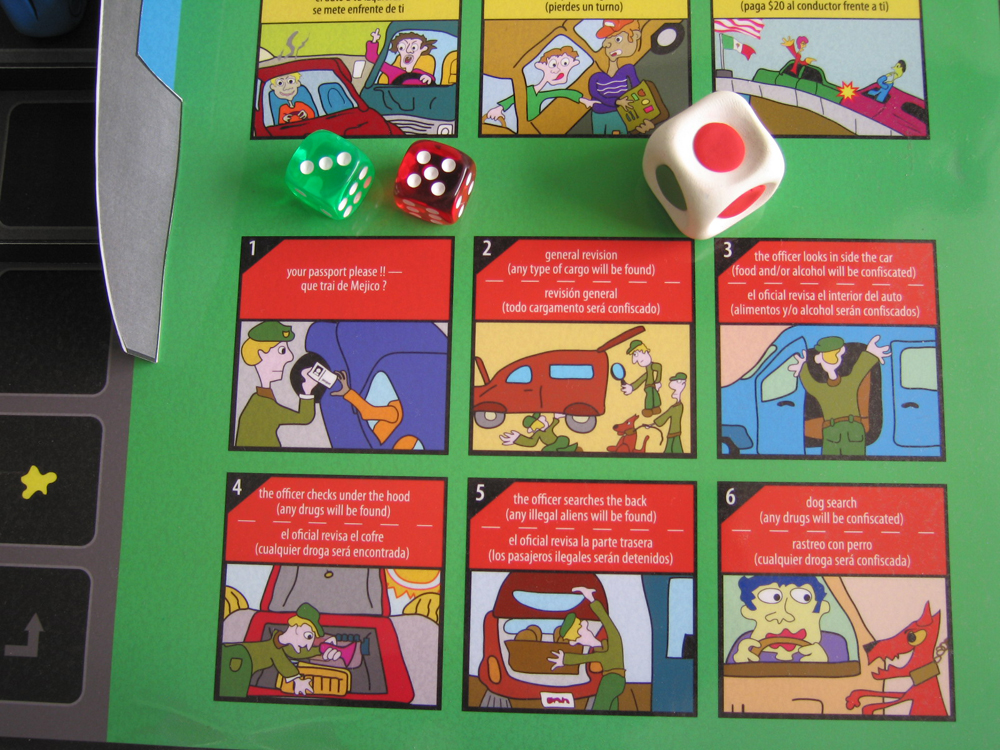
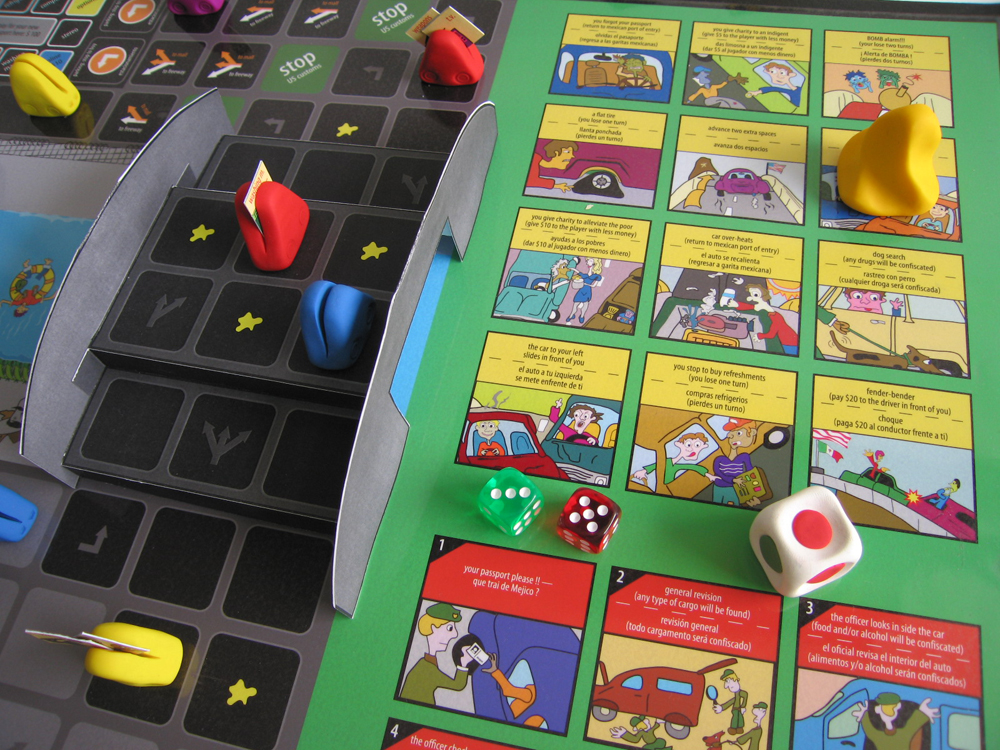
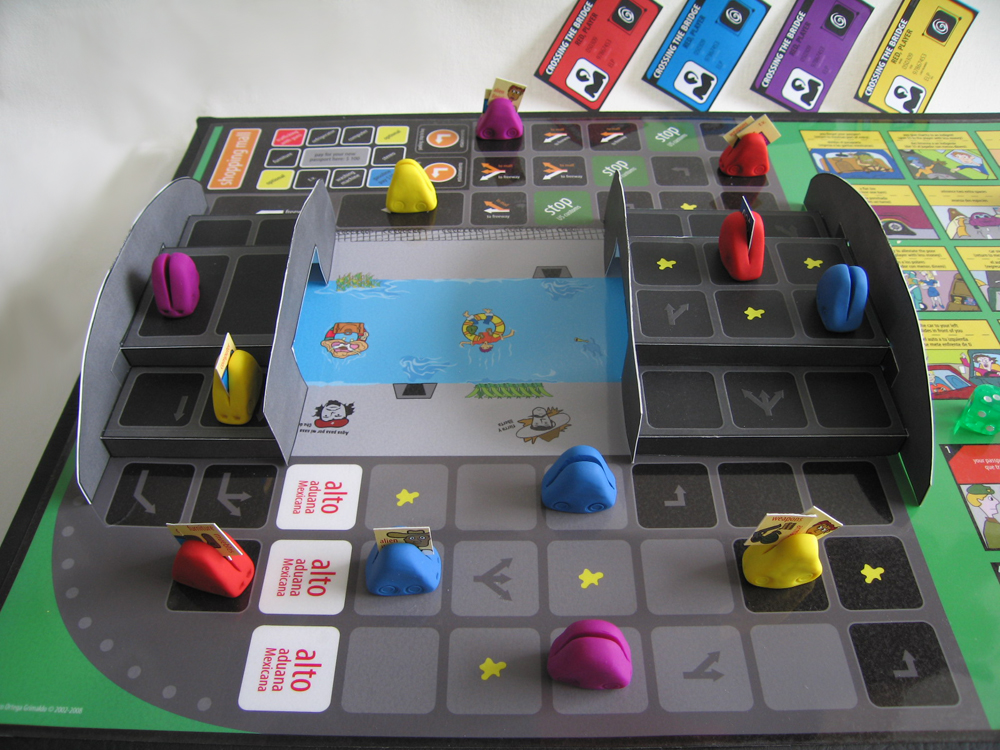
 I came up with the idea of creating the game of Observance in response to the July 28, 2007 rejection of the U.S. Senate to revise the Immigration Reform Bill. I called the game observance because that is what people do when they are faced with the process of illegal migration: The immigrants observe the territory to see if they are being watched or followed; The border patrol observes the area in search of these immigrants and tries to stop them.
I came up with the idea of creating the game of Observance in response to the July 28, 2007 rejection of the U.S. Senate to revise the Immigration Reform Bill. I called the game observance because that is what people do when they are faced with the process of illegal migration: The immigrants observe the territory to see if they are being watched or followed; The border patrol observes the area in search of these immigrants and tries to stop them. 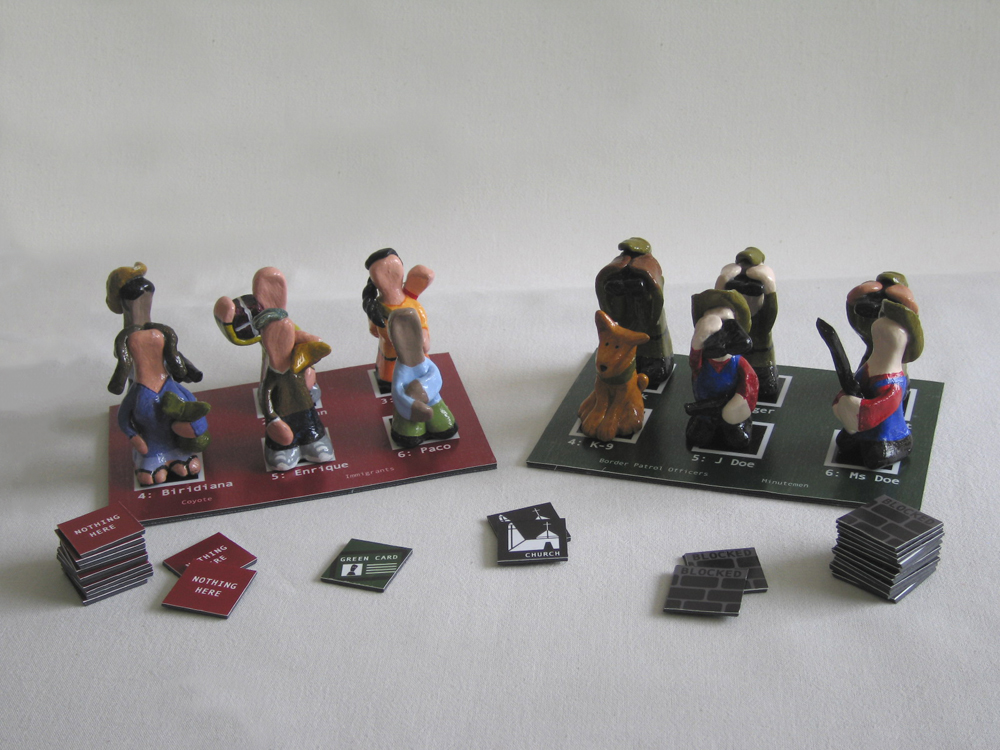
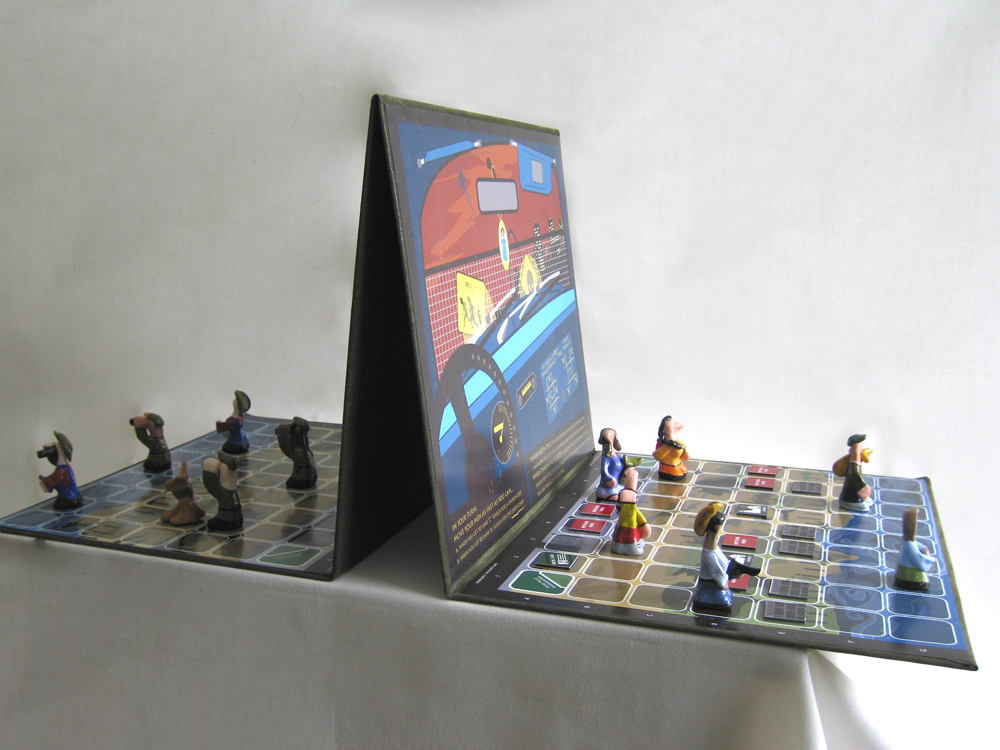
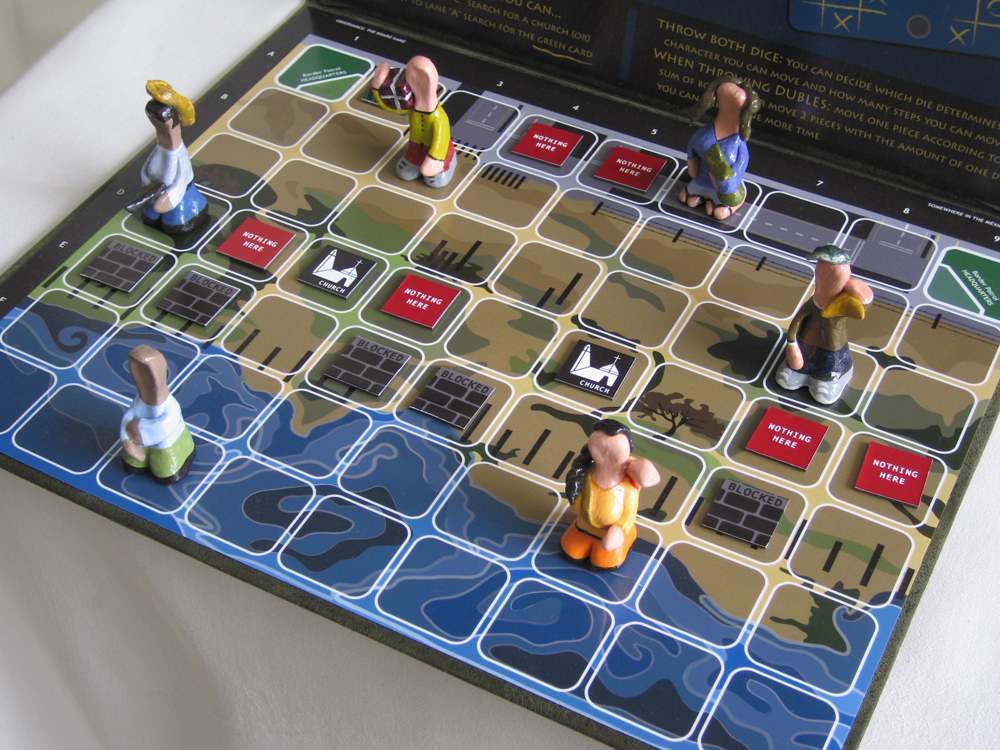
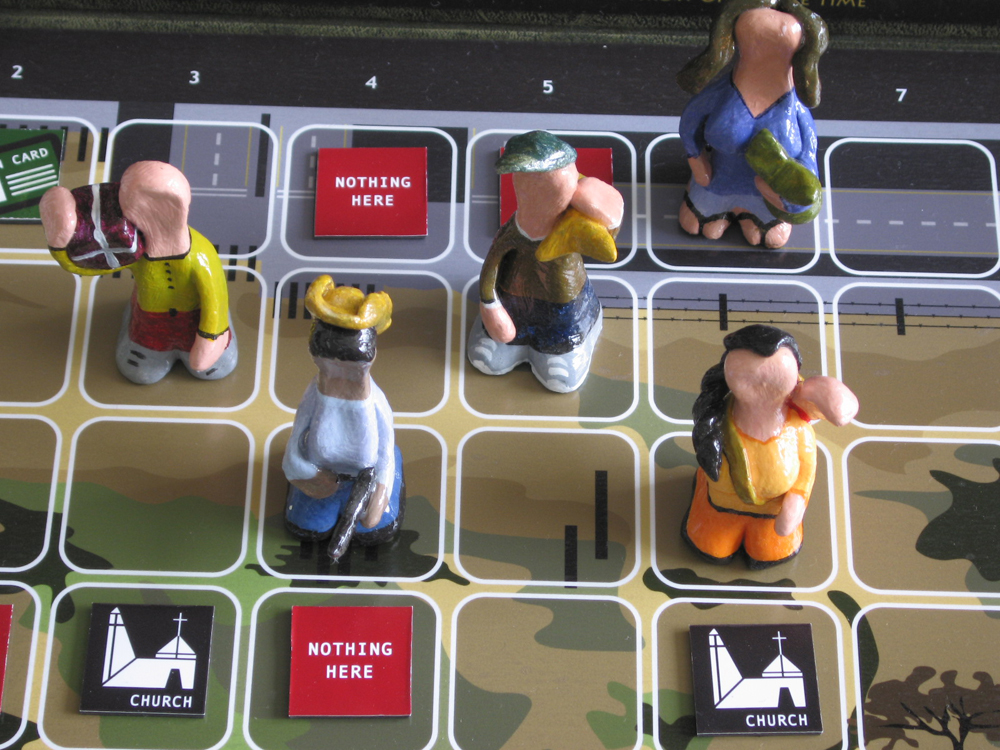

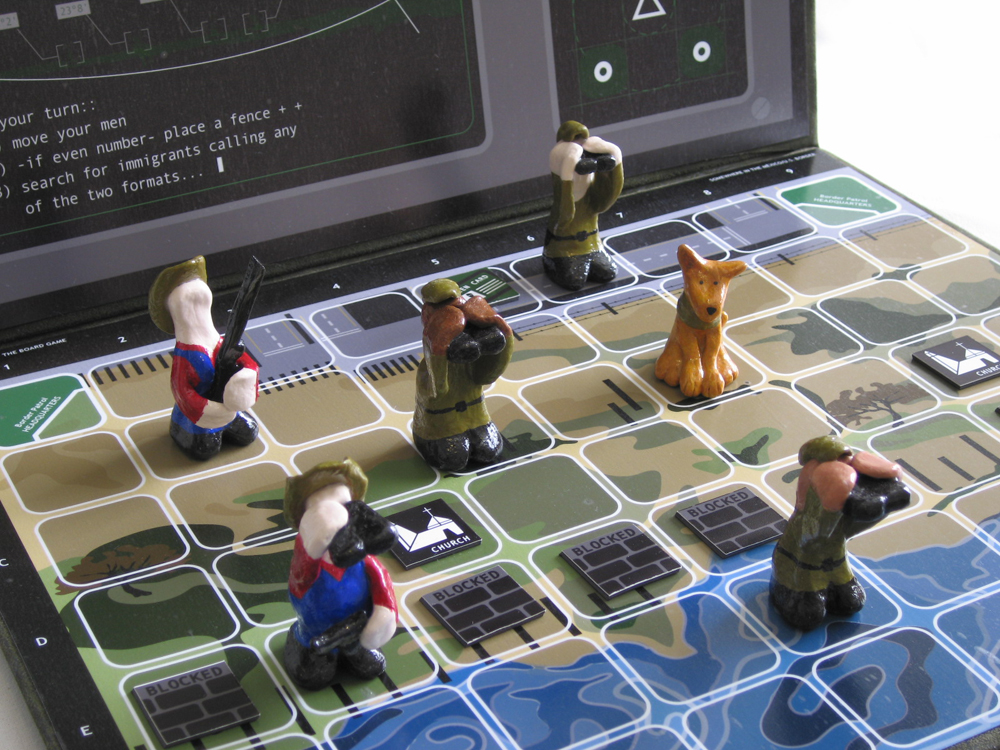

 This game unites all four [4] players to beat the game’s mechanics in a race against time. This game called “H1-B Visa,” illustrates the procedures that an immigrant has to go through in order to reach a legal status in the United States.
This game unites all four [4] players to beat the game’s mechanics in a race against time. This game called “H1-B Visa,” illustrates the procedures that an immigrant has to go through in order to reach a legal status in the United States. 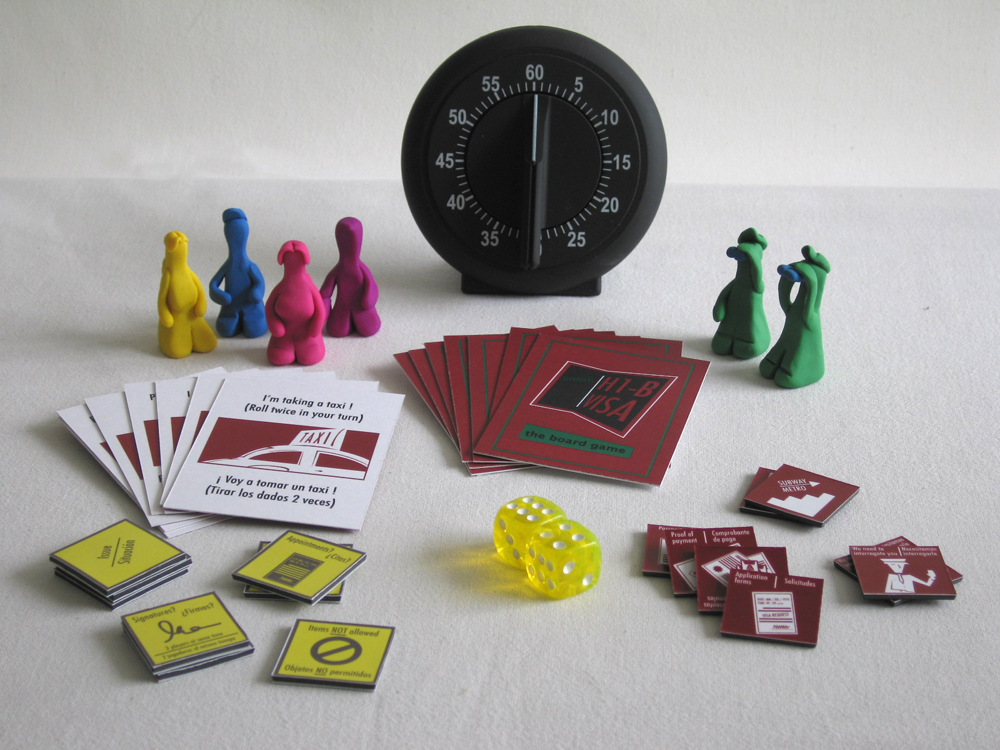
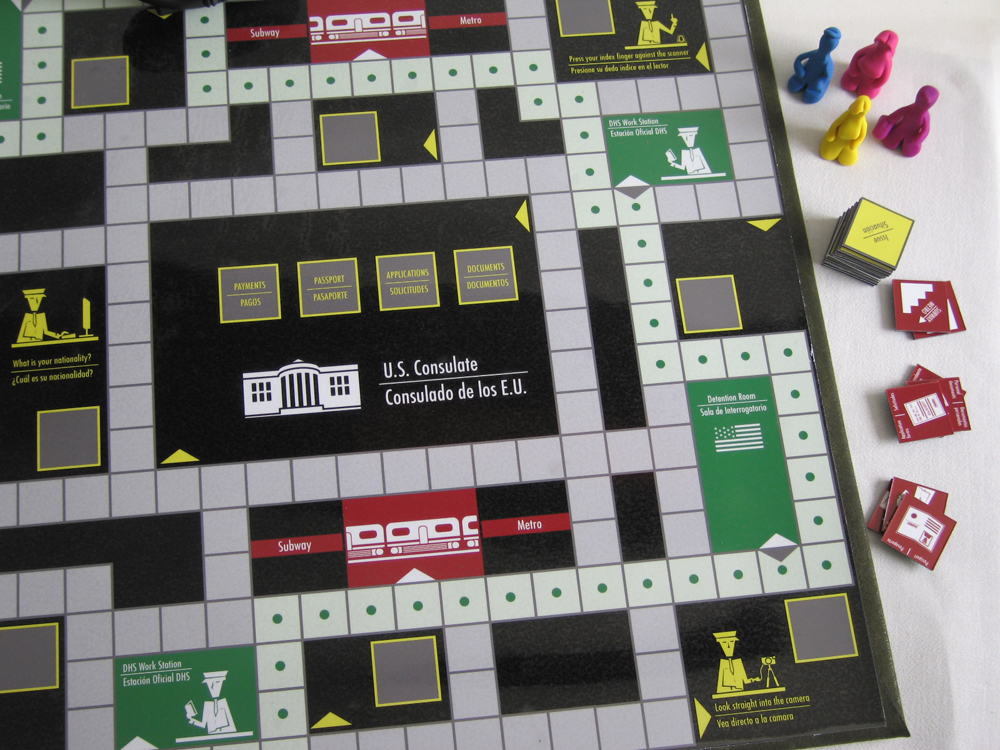
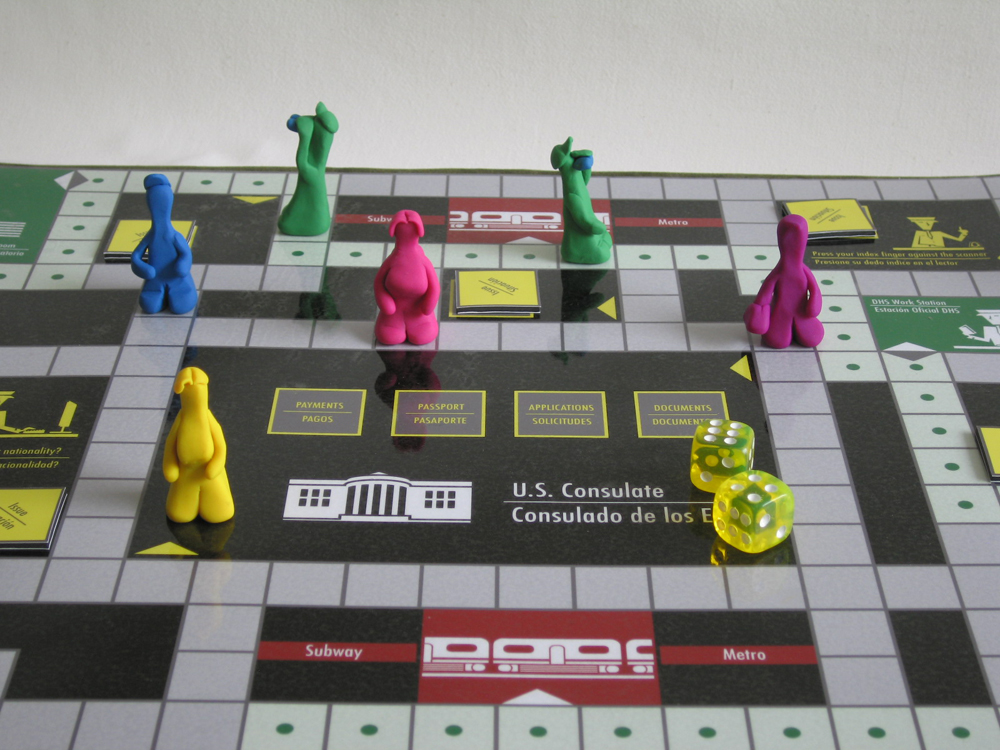
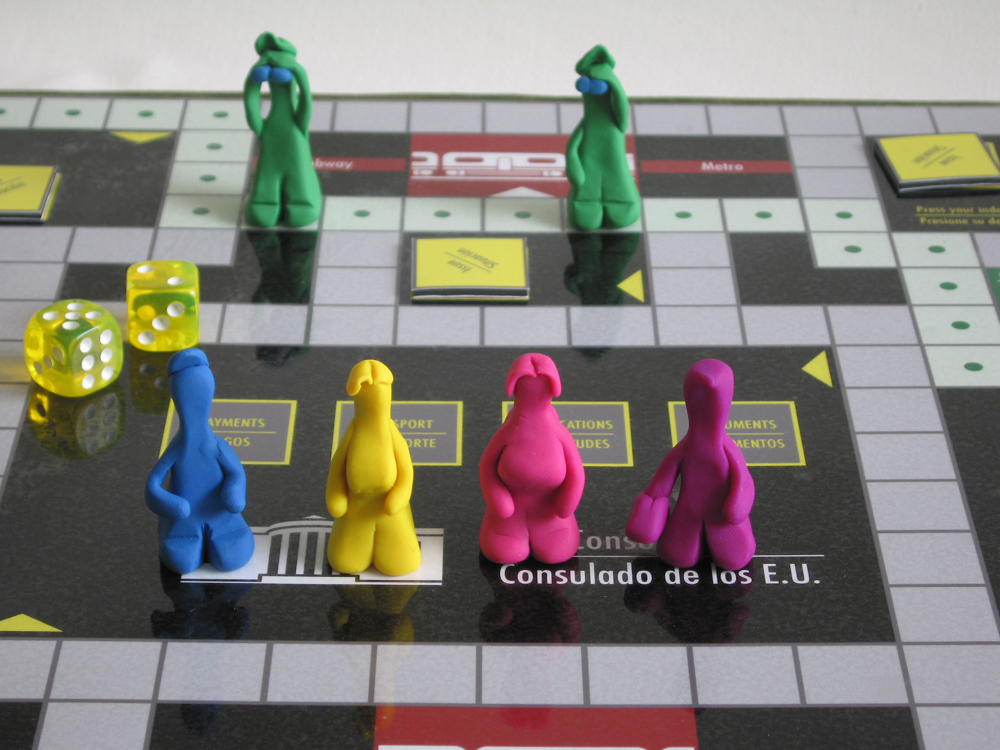
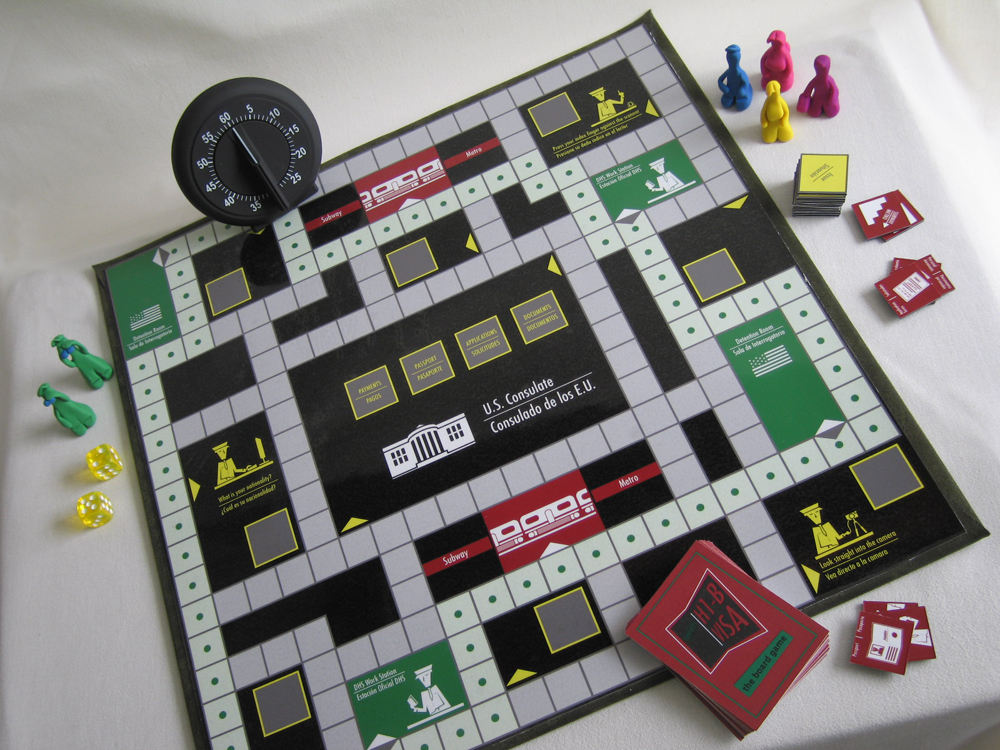
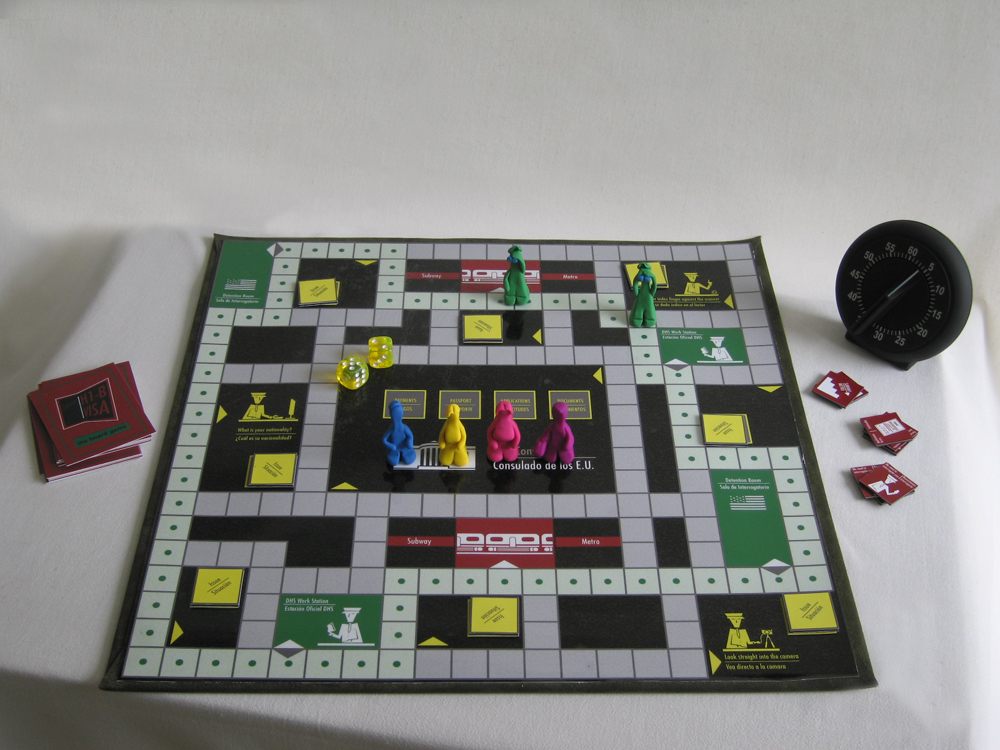
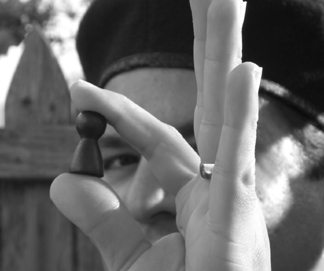 My area of work and expression is Graphic Design, or as I explain to everyone that is not related to the term: I play with the computer. It is not that I am a computer wiz but I learned to use the box as the main tool to create my artwork and to express creatively.
My area of work and expression is Graphic Design, or as I explain to everyone that is not related to the term: I play with the computer. It is not that I am a computer wiz but I learned to use the box as the main tool to create my artwork and to express creatively. 